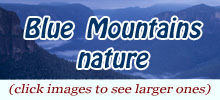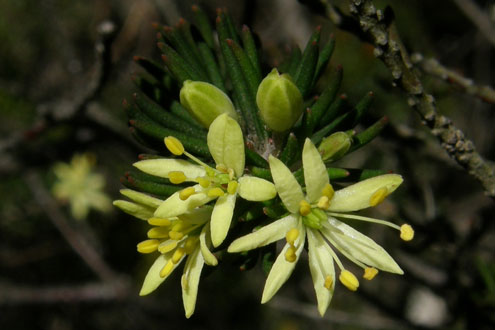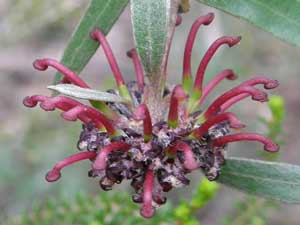Of the 2,362 species* of native plants in the GBMWHA 400 are protected, and of these 49 are classed as endangered and 59 are vulnerable.
[* - species in this case includes subspecies and varieties.]
Here's the list of the GBMWHA threatened and protected flora species.
What is a threatened species?
In NSW, plants and animals are assessed to determine whether they are at risk of extinction. If the risk is high they are listed in legislation, and conservation actions are developed for their protection.This is covered by the NSW Biodiversity Conservation Act 2016 which is administered by the NSW Department of Planning and Environment.
Their Threatened Species website has profiles of threatened species and recovery programs. Here's their profile of Zieria covenyi (Coveny's Zieria) shown here.
The GBMWHA Native Flora list of threatened species contains status codes for each species; some species have multiple codes.
There are three kinds of codes -- P - Protected
- E or V - Endangered or Vulnerable
- 1 to 3 - Sensitive Species
Protected. While all animals and plants classed as threatened species under the Act are protected, several non-threatened species are also protected. An example of this is the Waratah (Telopea speciosissima).
Protected species are not to be disturbed.
Other examples are all orchids native to NSW and flannel flowers (except the Lesser Flannel Flower (Actinotus minor)).
Endangered or Vulnerable. Threatened species that appear on our list use one of the following codes -
- V - "Vulnerable"
- E1 - "Endangered"
- E2 - "Endangered Population"
- E4A - "Critically Endangered"
- "Species of high biological significance, for which no records will be provided at all."
- Species considered to be at serious risk from threats such as disturbance or exploitation. The geographic coordinates of sightings will be 'denatured'.
- "Species considered to be at medium to high risk of threats such as disturbance or exploitation. For species in this category, coordinates will be supplied to licensed clients, but will otherwise be supplied ‘denatured’."
‘denatured’ means its location is obfuscated or generalised.
An example of Sensitive Species Class 1 is the Wollemi Pine (Wollemia nobilis) which I have added to the GBMWHA Native Flora list as it didn't come up in the PlantNet's list of Wollemi National Park species.
There may be other species who are also not in the GBMWHA Native Flora list due to their locations being withheld. I for one have no issue with this.
Vulnerable and endangered ecological communities is, at present, outside the scope of this analysis.
Commonwealth Government threatened species falls under the Environment Protection and Biodiversity Conservation Act 1999 (EPBC Act).
While the NSW and Commonwealth's threatened species determinations are mostly in agreement, species may be significantly rarer, or even extinct, in NSW but found in other states, and therefore are deemed not to be a Commonwealth threatened species.




